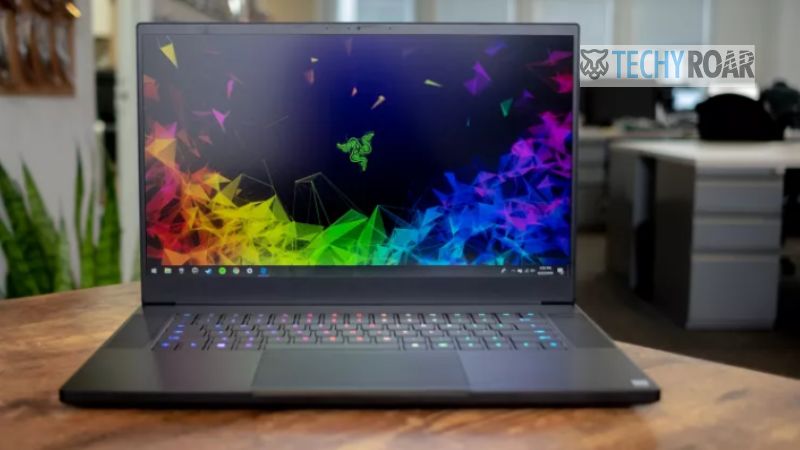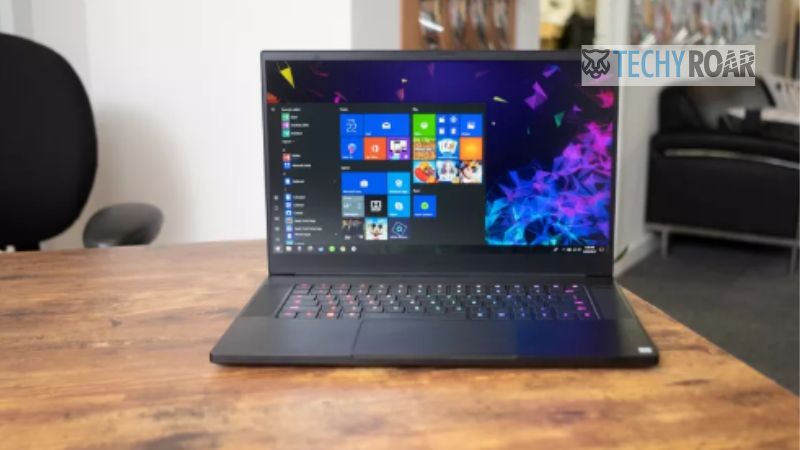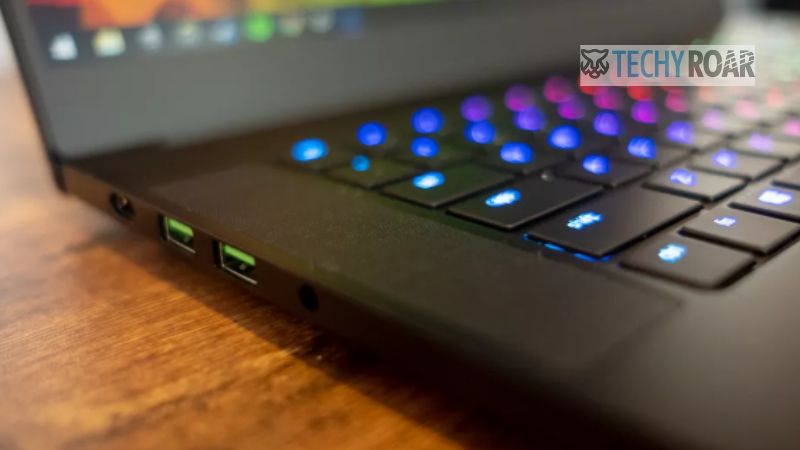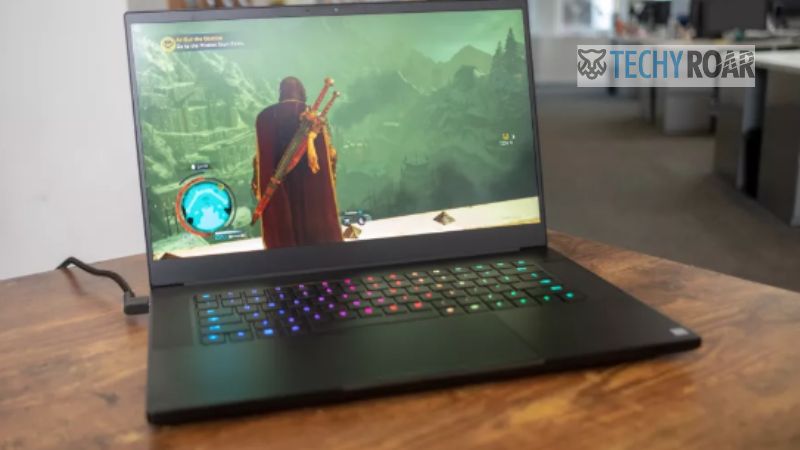This 2018 Razer Blade is a very sleek and pleasant-feeling laptop, but it suffers from numerous shortcomings that are difficult to overlook. With the most recent Blade, Razer is undoubtedly at the top of the game, but the competition in the gaming laptop market is obviously catching up.
Advantages
Excellent screen, beautiful new design, and outstanding performance
Disadvantages
Heats up under strain, has a short battery life, and lacks Windows Hello.
For a few years now, the Razer Blade is routinely ranked among the finest gaming laptops. With a gaming-focused design that shares a form factor with the greatest Ultrabooks and Razer’s own Razer Blade Stealthy, it’s even better than ever in 2018.
This Razer Blade (2018) is indeed a significant improvement for the well-liked brand, bringing in a few major changes including the inventive design that fits a 15.6-inch display in some kind of a 14-inch chassis. It has undergone a complete makeover, making it among the tiniest 15-inch gaming laptops available.
Specifications
Intel Core i7-8750H, 2.2 GHz (hexa-core, up to 4.1GHz with Turbo Boost)
Graphics: Intel UHD 630 and Nvidia GeForce GTX 1070 (8GB GDDR5 VRAM each).
16 GB DDR4 RAM (dual-channel, 2,667MHz)
Screen: FHD (1,920 x 1,080) matte 15.6-inch (144Hz; IPS; 100 percent sRGB)
Storage: M.2 SSD with 512GB (NVMe PCIe 3.0 x4)
Thunderbolt 3, three USB 3.1 ports, mini DisplayPort 1.4, and HDMI 2.0 are the ports available.
Intel Wireless AC 9260 connectivity (802.11ac; Bluetooth 5.0)
Camera: 1MP built-in webcam for (720p)
Weighs 4.63 lbs (2.10kg)
Size: 13.98 x 9.25 x 0.68 inches in (35.5 x 23.5 x 1.73cm; W x D x H)
Pricing and accessibility
Similar to its other laptops, Razer have priced the newest Blade quite exorbitantly. The 2018 Razer Blade costs $1,899 (£1,699, AU$2,899), which includes a high Definition (1,920 x 1,080) display running at 60Hz, the same CPU as the preceding variants, along with 256GB of storage.
The Razer Blade now comes in a new “Base” dual-storage variant that is quite similar to the entry-level model but has both the SSD and HDD. It costs $1,599 (£1,479, AU$2,499) for this dual-storage Razer Blade, which has a 128GB SSD as well as a 1TB hard drive. For $1,799 (£1,649, AU$2,799), you can have a 2TB HDD and up to a 256GB SSD.
The model that we evaluated here costs a hefty $2,599 (£2,329, AU$3,999). Between those two models, there is one that costs $2,199 (£1,979, AU$3,299) that has the 144Hz display, GTX 1060, and 512GB of storage, and another that costs $2,399 (£2,149, AU$3,699) but has less storage.
The most expensive model of something like the Asus ROG Zephyrus GX501 costs $2,899 (approximately £2,199, AU$3919), but it comes with a powerful GTX 1080GPU and Nvidia G-Sync. Everything else is same. The entry-level model, which has a GTX 1070 behind the same 120Hz panel, costs $2,299 (around £1,749, AU$3,100).
In contrast, the MSI GS65 Stealth, which was also refreshed at CES 2019, has the same CPU as the entry-level Razer Blade but a quicker 144Hz display and costs just $1,799 (£1,790, AU$2,599). For $2,999 (£2,349, around AU$4,080), the GS65 triple the storage and RAM of the Razer Blade.
Razer blade’s Design
Even so, this new Razer Blade is indeed the company’s most attractive gaming laptop to date. The Razer Blade takes a much more angular appearance this time around while reducing the illumination to only the keyboard and the Razer logo here on top. It is still covered with an all, unibody aluminum casing.
At the same time, Razer has worked hard to make the Razer Blade thinner. The company claims to have created the “smallest 15.6-inch gaming laptop” with a 0.66-inch (16.76mm) thin GTX 1060 model. Due to this new, smaller screen bezel, it is also less than 14 inches broad.
Fortunately, the Razer Blade maintains the camera in its appropriate location well above screen while utilizing thin bezels. Other laptop manufacturers, take note.
The Razer Blade is shockingly thick while being much thinner than that of the MSI GS65 Stealth and weighing half a pound more. Even though Razer was able to make the charging brick smaller, it was still heavier than we’d have liked and overall heavier than comparable small and light gaming laptops.
The Razer Design is mostly similar to earlier models, despite extensive streamlining, but bigger. With some of the punchiest response and smoothest travel we’ve felt on an island-style keyboard, the keyboard feels terrific, of course.
The trackpad is in an equally terrible circumstance. While we applaud Razer for finally adopting a clickpad design and doing away with the flimsy buttons like such a nasty habit, this same tracking surface may be a little too wide.
Finally, even though the top-firing speakers are superior to those on most other laptops in terms of sound quality, A rectangle power button that sits atop this same right speaker and is soft and smooth was even placed perfectly by Razer. At this cost, secure login ought to be a given.
Display
Whenever it pertains to the Razer Blade’s display, Razer outdid itself. Despite only having a 1080p resolution, this screen is quite stunning and has a matte finish that does a good job of reflecting light, clare.
A large part of it is due towards the 144Hz refresh rate, significantly enhances game visuals by exceeding the frame rate of the majority of games played on the device. This enables the Razer Blade can compensate for any possible weaknesses in the GTX 1060 of 1070’s ability to provide steady frame rates with high resolution settings.
The display absolutely pops with a broad variety of colors offered with outstanding precision thanks to the 100% sRGB color gamut.
Battery power
Additionally, the battery life of the Razer Blade is disappointing, lasting approximately an hour more than that of the Zephyrus laptop during testing but about the same amount less as the MSI GS65 Stealth. Although having a short battery life on gaming laptops is nothing new, things have improved recently. Razer has lagged behind the competition in this area since gaming laptops now frequently provide battery life of more than five hours.
We would want to get as least four hours’ worth more use out of it laptop at this price range. This is a point that deserves careful consideration, particularly given the way Razer is presenting its laptops as being excellent for mixed usage.
Features and software
The only pre-installed software you’ll discover here on Razer Blade is Razer Synapse, which, absent any other subsidies further than an Intel label on the base, would help to explain its price. This is the company’s software for managing the many RGB lighting settings on the laptop, but this time around it serves a new purpose: even greater performance.
You may now engage a game mode that increases the graphics chip’s CPU & video memory frequencies by 100MHz & 300MHz, respectively, using the version of the program present on the Razer Blade. This will undoubtedly raise your gaming frame rate, but it will also make your device hotter, so you should think twice before overclocking when you’re on the move.
Final judgement
With the most recent Blade, Razer has created one of its most beautiful and seductive laptops yet, but it still has some fundamental problems that are present in both competing gaming laptops and Razer’s earlier models. With it’s own overclocking option and 144Hz display, the gaming laptop will perform better than others in terms of frames per second and smoothness.
However, the poor battery life, extremely high temperatures, absence of Windows Hello functionality, and moderately odd keyboard layout cause us to have second thoughts. That’s especially true in light of the hefty price tag that was anticipated.
With the most recent Blade, Razer is undoubtedly there at top of its game, but the competition in the gaming laptop market is obviously catching up.




